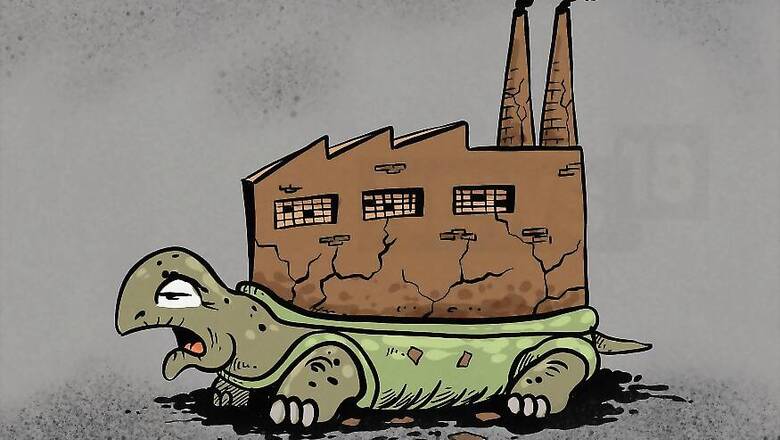
views
New Delhi: India's Gross Domestic Product (GDP) growth slipped to a nearly seven-year low of 4.7% in October-December 2019, weighed by a contraction in manufacturing sector output, according to official data released on Friday.
The GDP growth was recorded at 5.6% in the corresponding quarter of 2018-19.
In the previous quarter (July-September) of the ongoing fiscal, the economic growth was revised upwards to 5.1% from 4.5% estimated earlier. Similarly, the first quarter growth was revised upwards to 5.6% from 5%.
The GDP growth for the December quarter is the lowest since January-March of 2012-13, when it stood at 4.3%.
The Finance Ministry said the decline in economic growth has bottomed out even as the GDP growth slowed to a nearly seven-year low in the quarter ending December 2019.
"We have already bottomed out," said Economic Affairs Secretary Atanu Chakraborty after the NSO released its data.
According to the data released by the National Statistical Office (NSO), the gross value added (GVA) growth in the manufacturing sector contracted by 0.2% in the third quarter of this fiscal from 5.2% expansion a year ago.
However, the farm sector GVA growth was up at 3.5%, compared to 2% growth in the corresponding period of the previous fiscal.
Construction sector GVA growth also slowed to 0.3% from 6.6% expansion earlier. Mining sector growth came in at 3.2%, as against a contraction of 4.4% a year ago.
Electricity, gas, water supply and other utility services segment contracted by 0.7%, from 9.5% growth a year ago.
Similarly, trade, hotel, transport, communication and services related to broadcasting growth declined to 5.9% in the third quarter from 7.8% a year ago.
Financial, real estate and professional services growth was up at 7.3% in Q3 FY2019-20 from 6.5%.
Public administration, defence and other services reported improvement with 9.7% rise during the quarter under review, from 8.1% a year earlier.
During April-December 2019, the GDP growth reduced to 5.1% as compared to 6.3% in the same period a year ago.
Data released by the commerce ministry showed that eight core industries recorded a 2.2% growth in January, helped by expansion in the production of coal, refinery products and electricity.
Chakraborty said the growth in the core sector industries has also witnessed progress during the December and January quarter, which "augurs well" for the manufacturing sector during the January-March quarter of the fiscal.
The data released on Friday covered up to the end of last year, before the coronavirus outbreak in China sparked fears of a pandemic.
Having suffered its weakest expansion in over six years in the September quarter, India's economy probably fared slightly better in the December quarter, before suffering a relapse due to the impact of the coronavirus globally, said analysts.
On the coronavirus impacting the global economy, Chakraborty said, "It is an unfolding story."
Shares of 2,011 BSE-listed companies ended in the red on Friday as benchmark indices plummeted to nearly five-month lows on rising fears of the coronavirus outbreak turning into a pandemic and derailing global growth.
In its annual budget presented earlier this month, the government estimated economic growth in the current fiscal year ending in March would be 5%, the lowest for 11 years.
And the government only targeted a slight recovery in growth to 6% for 2020-21, well below the levels required to generate jobs for the millions of young Indians entering the labour market each month.
The government estimated that gross value added (GVA), which is GDP minus net taxes, will grow at 4.9% in 2019-20 against 4.3% in Q2. FY20 Nominal GDP growth estimate is unchanged at 7.5%.
GVA is a more realistic guide to measure changes in the aggregate value of goods and services produced in an economy. According to the estimates, farm sector is set to grow at 3.5%.
(With inputs from agencies)













Comments
0 comment